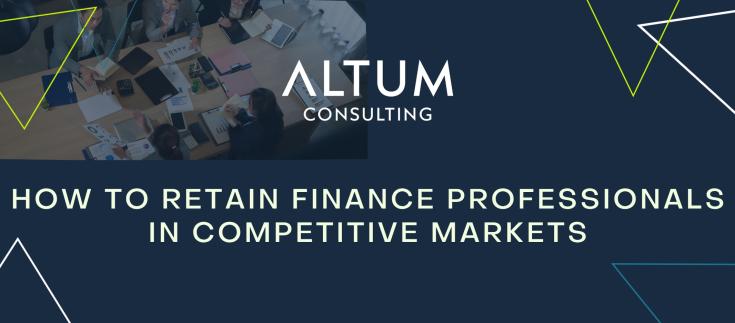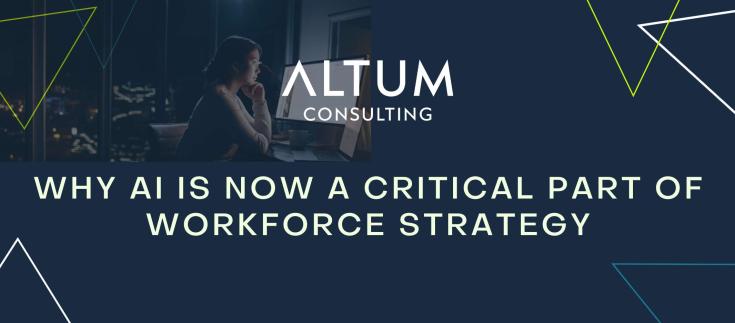By Kyle Heinrich | Altum Consulting
Competition for quality HR roles has intensified across the charity, not-for-profit, and public sectors. Vacancies have contracted whilst application volumes have risen, creating a market where differentiation matters more than submission frequency. For professionals seeking senior HR positions in mission-led organisations, understanding what hiring teams actually prioritise makes the difference between shortlisting and silence.
The data tells part of the story. UK vacancies fell to 728,000 in June - August 2025, the 38th consecutive quarterly decline, whilst unemployed people per vacancy rose to 2.3. But these numbers only explain the context. What separates successful candidates from the majority is how they approach applications, present evidence, and prepare for conversations about values alignment and stakeholder impact.
What hiring teams see
Screening has become more demanding because volume has forced tighter filters. Generic submissions get rejected quickly, often within seconds of initial review. Hiring managers in values-driven organisations report that most applications fail to address the actual requirements or demonstrate relevant outcomes. The professionals who progress understand the brief, provide specific evidence, and show commercial awareness that aligns with the role's strategic context and the organisation's mission.
Large UK employers now use structured assessment earlier in the process. Skills-based testing, work samples, and competency frameworks have become standard across mid to senior recruitment. This shift rewards candidates who prepare examples of measurable impact and can articulate their thinking under scrutiny.
Practical steps that work
Match the brief, not just keywords
Effective applications mirror the language and priorities in job descriptions. This means addressing essential criteria directly and explaining how previous experience connects to the role's stated challenges. Clear alignment to the role purpose, reporting line, and success measures speeds movement to interview.
Quantify outcomes wherever possible
Recruiters prefer outcomes over responsibilities. Strong candidates describe what they achieved and how they measured success. Examples might include reducing time-to-hire by X%, increasing engagement scores by X%, cutting first-year attrition, or delivering policy changes across X markets on time and within budget. These specifics demonstrate impact in terms decision-makers understand and value.
Show current capability, not just past roles
Listing HRIS platforms, people analytics tools, ER casework complexity, or change delivery scope helps screeners assess technical fit quickly. For AI-aware HR roles, mentioning where automation or data analysis has been applied shows adaptability to how the function is changing.
Keep LinkedIn consistent with the CV
Talent teams check LinkedIn for role consistency, reporting scope, and achievements. Profiles that include a concise value statement, recent certifications, and one or two artefacts (case study outline, project summary) reinforce credibility. Discrepancies between platforms raise questions and can eliminate otherwise strong candidates.
Target outreach carefully
Referrals remain effective for HR roles where values alignment and stakeholder management are critical. Short, specific messages to recruiters that reference the role, the stated challenges, and two relevant achievements receive higher response rates than broad networking attempts. The key is demonstrating genuine interest in that specific opportunity rather than mass outreach.
Prepare for stakeholder-focused interviews
Interview panels probe stakeholder complexity, decision rights, and trade-offs. Strong candidates anticipate questions on change adoption, policy risk, governance routes, and how data informed decisions. Bringing a one-page artefact (sample comms plan or anonymised KPI summary) often differentiates at final stage because it shows preparation depth and commercial thinking.
Focus areas by HR discipline
Business partnering roles require commercial fluency through budget influence, headcount planning cycles, and leadership team dynamics. Bring a concise example of moving a performance indicator such as absence or regrettable attrition.
Talent acquisition positions look for funnel ownership, source mix performance, DE&I outcomes, hiring manager enablement, and time-to-accept improvements supported by process changes.
Employee relations candidates should present case mix, resolution timelines, risk categorisation, and tribunal exposure, alongside preventative interventions that reduced repeat patterns.
Reward specialists need evidence of cycle delivery, benchmarking approach, pay review governance, and impact on retention in constrained markets.
Learning and development professionals should link curricula to business metrics, showing uplift in adoption, post-learning impact, and manager enablement results.
People analytics roles require metrics design, data quality remediation, and clear examples of how insights changed manager behaviour. Make the tools stack and data limitations addressed explicit.
Where demand holds
Charity and not-for-profit sectors continue hiring for ER-heavy and transformation roles, particularly in organisations navigating growth or structural change. Public services and health sectors show resilience, with human health and social work seeing workforce growth of 68,000 jobs over the past year. Private sector volumes have cooled, but HR hiring persists in regulated, multi-site organisations facing change programmes. Selection standards have tightened, with more structured assessment and longer decision timelines.
A practical note on AI tools
ATS filters have become stricter because application volumes have surged. Overuse of AI-generated content produces repetition and lacks the contextual detail that passes screening. Talent teams discount submissions that miss stakeholder nuance or provide generic examples. Professionals who use AI for initial drafting but rewrite to reflect true scope and impact fare better at both sift and interview stages.
What Altum sees working
Altum's HR practice prioritises evidence-backed profiles, interview coaching focused on outcomes and stakeholder dynamics, and role-by-role alignment to selection criteria. For interim mandates, clients expect week-one traction. Professionals who show prior "first 30 days" frameworks and can articulate how they've built credibility quickly in new environments are preferred in shortlists.
The market remains competitive, but professionals who understand what hiring teams need to see will continue securing opportunities. Quality of application consistently outperforms quantity of submissions.
Altum Consulting is a specialist search and interim management firm, focused on Accountancy & Finance, Change & Transformation, Human Resources and Audit, Risk & Compliance.
Sources referenced:
Want to know more?











